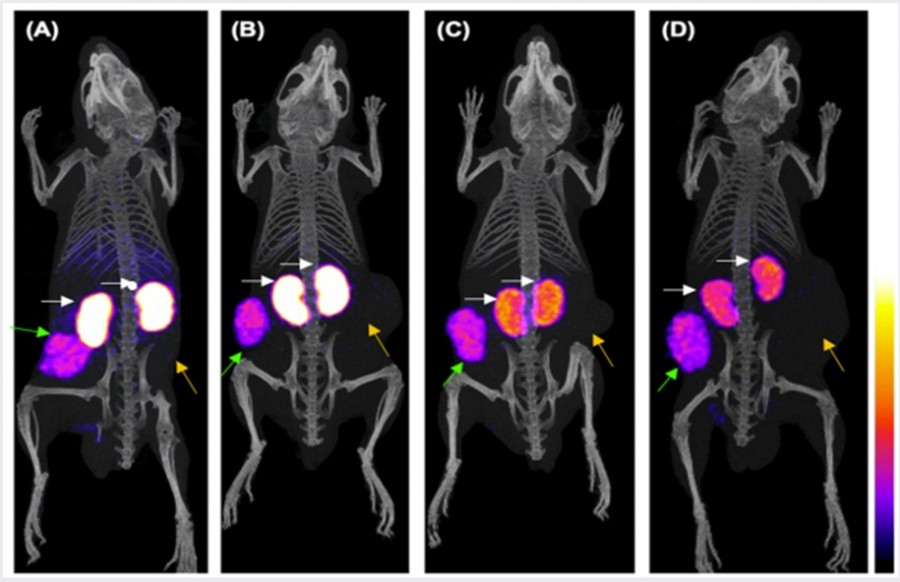Monitoring the biodistribution of radiopharmaceuticals and gelofucine using MOLECUBES’ SPECT imager
08/04/2024

A, B: uptake of 99mTc-DGA1 without the coadministration of gelofucine. C, D: uptake of 99mTc-DGA1 with the coadministration of gelofucine, reducing kidney uptake significantly.
The γ-CUBE has been used in a cancer research study to visualize and quantify enhanced tumor targeting for theranostic applications
Modern anticancer drugs are designed to selectively interact with tumor-associated biomolecular targets with the goal of minimising damage to healthy tissues. These novel anticancer drug-candidates have the potential to serve as radionuclide carriers to tumor-located receptors, allowing for diagnostic imaging and/or radionuclide cancer therapy in theranostics.
In a study conducted by Kaloudi et al. at INRASTES, the efficacy of gelofucine in concentrating a radiopharmaceutical within tumor cells was explored, aiming to minimise damage to healthy tissues. A CCK2R antagonist, DGA1, was specifically designed and radiolabelled with 99mTc. To mitigate radiotracer accumulation in the kidneys and thus preserve healthy tissue, gelofucine was concurrently administered alongside DGA1. Using the MOLECUBES γ-CUBE for SPECT imaging, the biodistribution of DGA1 was analysed, revealing that gelofucine successfully concentrated 99mTc in tumor tissue while reducing levels in the kidneys. This outcome effectively achieved the objective of sparing healthy tissues.
A multimodal approach to preclinical imaging

In addition to the γ-CUBE for SPECT used in this study, MOLECUBES also offers the X-CUBE for CT and β-CUBE for PET for in vivo multimodal whole-body rat and mouse imaging. The benchtop preclinical imagers are recognized for providing high research throughput in a compact footprint and the limitations of each modality are offset when used together. With MOLECUBES, researchers can easily assess the distribution and uptake of radionuclides, creating a valuable preclinical screening tool that enables non-invasive evaluation of treatment responses.
Find out more
To read the full research paper from Kaloudi et al., click here. You can learn more about MOLECUBES by clicking the button below to speak to a product specialist directly and requesting a guided demonstration.